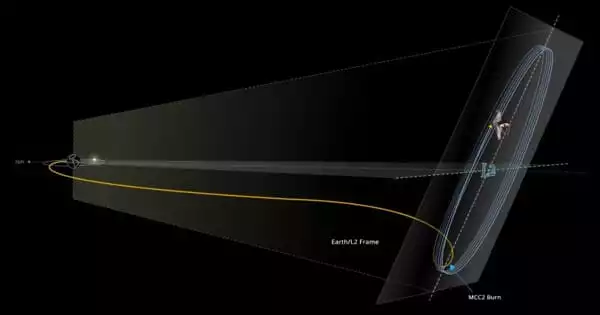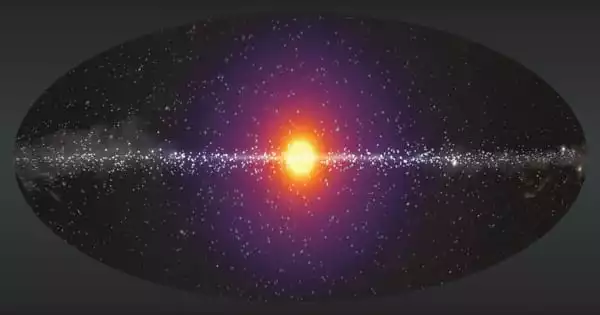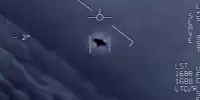An international team of researchers, led by the PRISMA+ Cluster of Excellence at Johannes Gutenberg University Mainz (JGU) and the Helmholtz Institute Mainz (HIM), has published full data on the search for dark matter utilizing a global network of optical magnetometers for the first time. According to the scientists, dark matter fields should provide a distinct signal pattern that may be discovered using correlated observations from numerous GNOME network locations.
Data analysis from a one-month continuous GNOME operation has failed to produce a relevant indication. However, as the researchers explain in the journal Nature Physics, the measurement allows them to set restrictions on the properties of dark matter.
Global Network of Optical Magnetometers for Exotic Physics Searches (GNOME) is an acronym that stands for Global Network of Optical Magnetometers for Exotic Physics Searches. Magnetometers in Germany, Serbia, Poland, Israel, South Korea, China, Australia, and the United States are at the heart of it. The researchers hope to use GNOME to further the search for dark matter, which is one of the most fascinating issues in fundamental physics in the twenty-first century. After all, it has long been known that dark matter may best explain many intriguing astronomical findings, such as the rotation speed of stars in galaxies or the spectrum of cosmic background radiation.
If such a wall collides with the Earth, it is progressively recognized by the GNOME network and can generate brief characteristic signal patterns in the magnetometers. Even more, the signals are connected in specific ways based on how rapidly the wall is traveling and when it reaches each point.
Dr. Arne Wickenbrock
“Today, extremely light bosonic particles are thought to be one of the most promising candidates for dark matter. These include what are known as axion-like particles, or ALPs for short “Professor Dr. Dmitry Budker of PRISMA+ and HIM, an institutional collaboration of Johannes Gutenberg University Mainz and the GSI Helmholtzzentrum für Schwerionenforschung in Darmstadt, stated. “They can also be thought of as a classical field vibrating at a specific frequency. A feature of such bosonic fields is their ability to build patterns and structures, according to one plausible theoretical scenario. As a result, the quantity of dark matter could be concentrated in a variety of locations, such as discrete domain walls smaller than a galaxy but much larger than Earth.”
“If such a wall collides with the Earth, it is progressively recognized by the GNOME network and can generate brief characteristic signal patterns in the magnetometers,” one of the study’s co-authors, Dr. Arne Wickenbrock, noted. “Even more, the signals are connected in specific ways based on how rapidly the wall is traveling and when it reaches each point.”

Meanwhile, the network is made up of 14 magnetometers spread across eight countries, with nine of them providing data for the current analysis. The measurement principle is based on dark matter interacting with the nuclear spins of the magnetometer’s atoms. The atoms are activated using a laser at a precise frequency, which causes the nuclear spins to be oriented in one direction. A potential dark matter field can disturb this direction, which is measurable.
As Hector Masia-Roig, a PhD student in the Budker lab and co-author of the new study, clarified, one may image the atoms in the magnetometer initially dancing around in disarray. “They all spin together when they ‘hear’ the proper frequency of laser light. Dark matter particles have the potential to destabilize the dancing atoms. We can precisely measure this disruption.”
The network of magnetometers is now crucial: The dancing atoms in all stations are gradually disturbed as the Earth travels through a spatially constrained wall of dark matter. One of these stations is housed in a laboratory at Mainz’s Helmholtz Institute. “Only by matching the signals from all the stations will we be able to determine what caused the disturbance,” Masia-Roig explained. “When applied to the image of the dancing atoms, this means that if we compare the measurement data from all of the stations, we can determine whether it was simply one bold dancer dancing out of step, or a global dark matter disruption.”
In the current study, the research team examines data from a month of continuous GNOME operation. The result: No statistically significant signals were found in the mass range studied, which ranged from one femtoelectronvolt (feV) to 100,000 feV. This, on the other hand, means that the researchers can reduce the range in which such signals could possibly be located even further than before. This is an important conclusion for scenarios that rely on distinct dark matter barriers, “even if we have not yet been able to detect such a domain wall with our global ring search,” stated Joseph Smiga, another PhD student in Mainz and research author.
The GNOME collaboration’s future work will focus on enhancing both the magnetometers and the data analysis. Continuous operation, in particular, should be more stable. This is necessary in order to search for signals that endure more than an hour. Furthermore, the previous alkali atoms in the magnetometers will be replaced with noble gases. The researchers believe this, dubbed Advanced GNOME, will provide in significantly improved sensitivity for future studies in the search for ALPs and dark matter.














